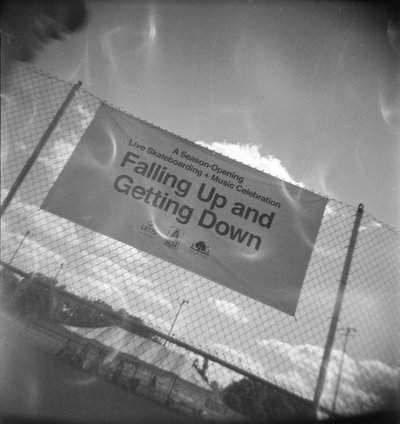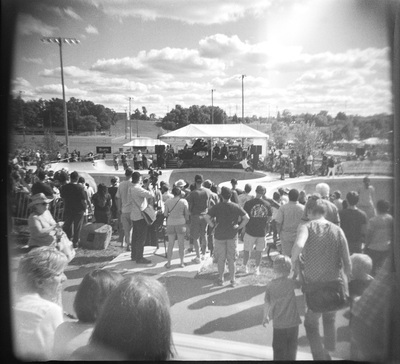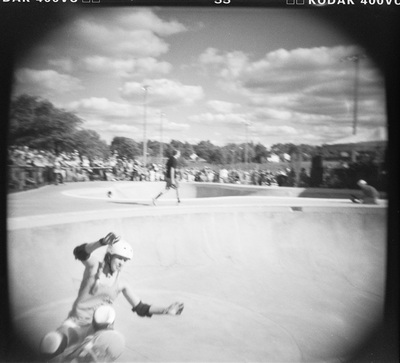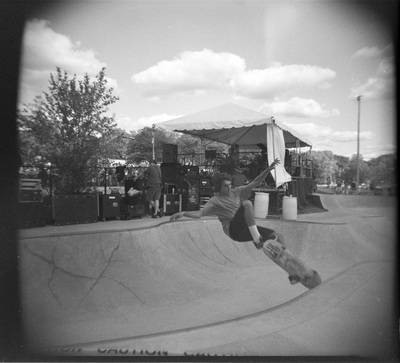UMS Falling Up and Getting Down
I was recently named a University Musical Society Artist in Residence for the 2016-2017 season. I’ll have more to say about this exciting news later, but right now I want to share some images from the first Renegade performance of the season: Falling Up and Getting Down which was a improvisation between live jazz and pro skateboarders.
On the beautiful September afternoon, I took along Stubbie (my Holga1) to make some images.

Sign

Public skate

Natalie Krishna Das

Crowd

Jordyn Barratt

Behind the Bandstand
I don’t normally photograph people, nor do I photograph action.2 I used Stubbie because of the feeling of “letting go” that I get from using it. If I’d taken a digital camera, or a film camera with standard controls, I would have spent much of my time trying to figure out the right settings to get perfect images. With Stubbie I was able to enjoy the performances of the musicians and the skaters, as well as make a few images that I’m happy with.
One more thing: these images show lots of processing “flaws” but really, that’s just a thing that happens when you’re using 15-year-old film. I’m learning in my art-making journey that the pursuit of perfection is sometimes an excuse for not even trying something. In the end, this is the lesson behind Falling Up and Getting Down — improvisation means working with what you have available to you in the moment, and even if it’s unexpected, it can still be pretty darned cool.
Technical notes
- Weather: partly cloudy and mid-70s.
- Holga settings: bright sun (about f/11)
- Ilford Delta 400 (B&W, expired about 2003) processed for 7½ minutes in HC110 dilution B (first 3 images)
- Kodak Portra VC 400 (color, expired about 1999) processed as B&W for 12 minutes in HC110 dilution H (last 3 images)
- Film scanned with Epson V600
- Contrast adjustments and spotting in Lightroom